Cactus plants are beloved for their striking shapes, low maintenance, and ability to thrive in harsh conditions. With thousands of species, these desert natives bring architectural beauty to homes and gardens. From spiky barrels to delicate flowering varieties, the types of cactus plants vary widely, offering something for every enthusiast. If you’re also curious about other succulents, check out Jade Plant Types for more low-maintenance options. Their resilience and unique aesthetics make cacti perfect for beginners and seasoned gardeners alike. This guide explores 15 popular cactus varieties, detailing their appearance, care level, and ideal environments, helping you choose the perfect cactus for your space.
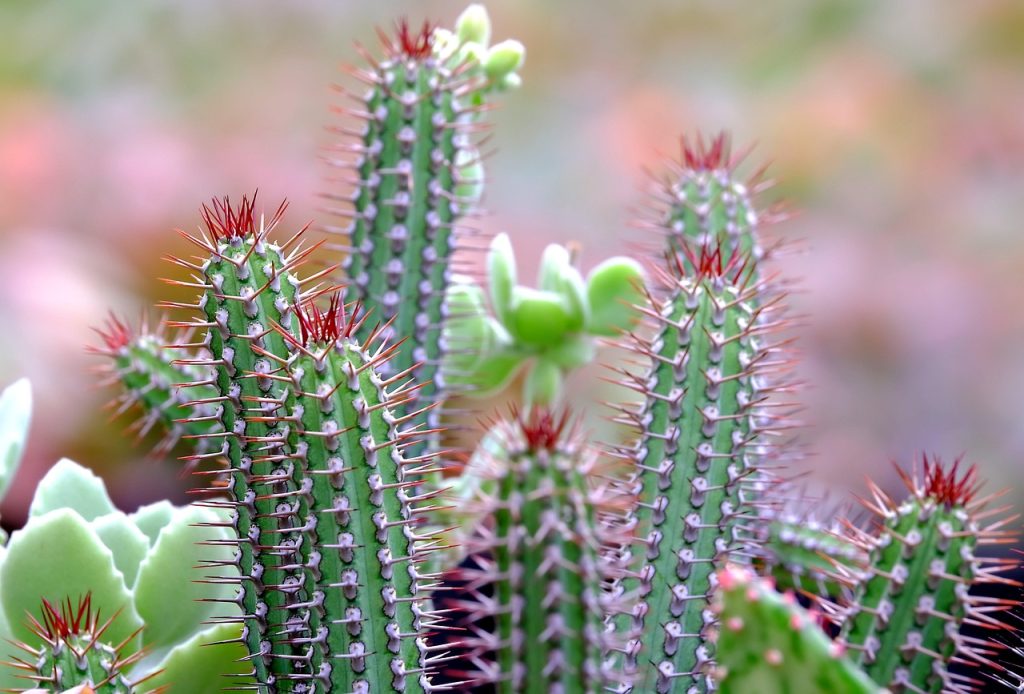
Classification of Cactus Types
Cactus plants can be categorized based on their growth habits, environments, and characteristics. Understanding these classifications helps you select the right type for your home or garden.
Indoor vs. Outdoor Cacti
- Indoor Cacti: Compact, slow-growing varieties suited for pots and limited spaces. They thrive in controlled environments with indirect light.
- Outdoor Cacti: Larger, hardier species that tolerate full sun, temperature fluctuations, and outdoor conditions.
Flowering vs. Non-Flowering Cacti
- Flowering Cacti: Produce vibrant blooms, often seasonally, adding color to spaces.
- Non-Flowering Cacti: Focus on structural beauty, with unique shapes and textures but no flowers.
Tall vs. Small Cacti
- Tall Cacti: Can grow several feet, ideal for outdoor landscapes or large indoor spaces.
- Small Cacti: Compact, perfect for windowsills, desks, or small gardens.
Popular Types of Cactus Plants
Below is a detailed guide to 15 popular cactus varieties, including their appearance, care level, and ideal environment. Each type is selected for its popularity and unique characteristics.
1. Golden Barrel Cactus (Echinocactus grusonii)
- Appearance: Rounded, bright green body with golden-yellow spines arranged in a ribbed pattern. Grows up to 3 feet tall and wide.
- Care Level: Easy. Requires minimal watering and thrives in neglect.
- Ideal Environment: Outdoor in full sun (USDA Zones 9–11) or indoors with bright, direct light. Well-draining soil is essential.
- Note: Produces small yellow flowers in summer when mature.
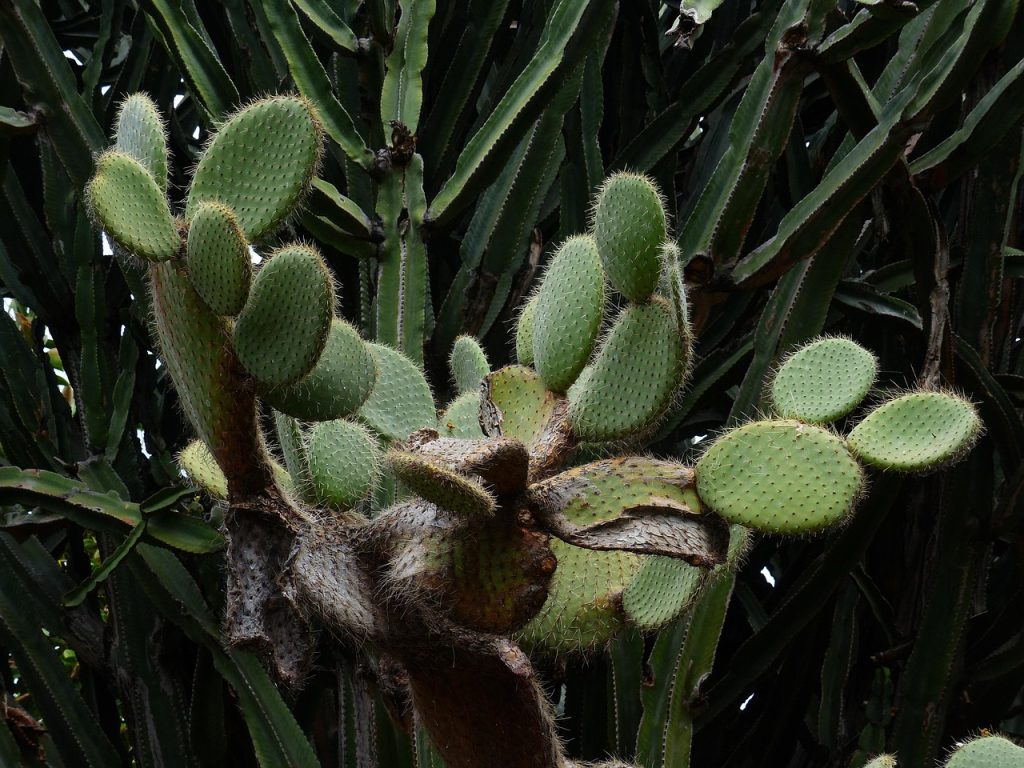
2. Bunny Ear Cactus (Opuntia microdasys)
- Appearance: Flat, oval pads resembling bunny ears, dotted with tiny, fuzzy glochids (avoid touching). Grows 1–2 feet tall.
- Care Level: Easy. Water sparingly, about once every 2–3 weeks.
- Ideal Environment: Indoor near a sunny window or outdoor in warm climates (Zones 9–10). Prefers sandy soil.
- Note: Rarely flowers but adds playful charm to any space.
3. Christmas Cactus (Schlumbergera bridgesii)
- Appearance: Flat, segmented stems with no spines. Produces vibrant pink, red, or white flowers in winter.
- Care Level: Moderate. Needs more water than desert cacti and prefers humidity.
- Ideal Environment: Indoor, with bright, indirect light. Ideal for cooler rooms (60–70°F).
- Note: Blooms around the holiday season, hence the name.
4. Saguaro Cactus (Carnegiea gigantea)
- Appearance: Iconic, tree-like cactus with arms, growing up to 40 feet tall. Green body with long, sharp spines.
- Care Level: Moderate. Requires minimal care but needs space and time to grow.
- Ideal Environment: Outdoor in arid climates (Zones 8–11). Full sun and well-draining soil.
- Note: Produces white flowers and edible fruit in summer.
5. Star Cactus (Astrophytum asterias)
- Appearance: Small, dome-shaped, spineless cactus with star-like white speckles. Grows 2–6 inches wide.
- Care Level: Easy. Water monthly and avoid overwatering.
- Ideal Environment: Indoor with bright light or outdoor in warm, dry climates (Zones 9–10).
- Note: Produces yellow flowers with red centers in spring.
6. Prickly Pear Cactus (Opuntia ficus-indica)
- Appearance: Large, flat pads with spines or glochids. Grows 3–15 feet tall, depending on variety.
- Care Level: Easy. Drought-tolerant and hardy.
- Ideal Environment: Outdoor in full sun (Zones 8–11) or large indoor pots with ample light.
- Note: Produces edible fruit and yellow or orange flowers.
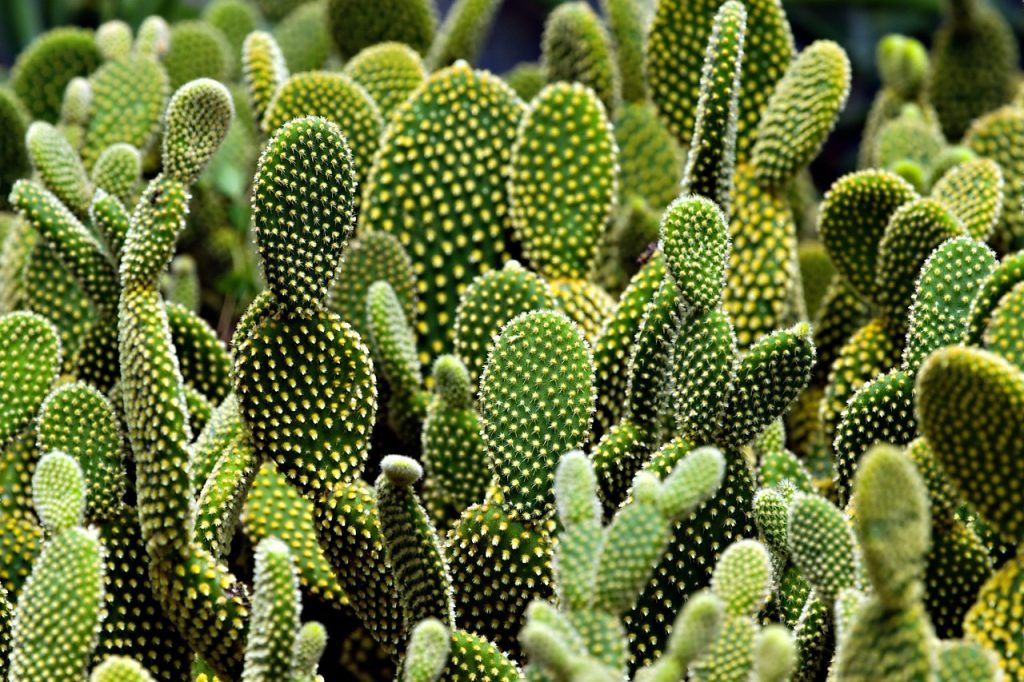
7. Moon Cactus (Gymnocalycium mihanovichii)
- Appearance: Brightly colored top (red, yellow, or pink) grafted onto a green base. Small, about 4–6 inches tall.
- Care Level: Moderate. Protect from direct sun to preserve color.
- Ideal Environment: Indoor, with bright, indirect light. Keep at 60–75°F.
- Note: The colorful top lacks chlorophyll and relies on the base for survival.
8. Fishhook Cactus (Mammillaria dioica)
- Appearance: Small, cylindrical body with hooked spines. Grows 6–12 inches tall, often in clusters.
- Care Level: Easy. Water every 2–3 weeks in growing season.
- Ideal Environment: Indoor or outdoor (Zones 9–11) with bright light and well-draining soil.
- Note: Produces small white or pink flowers in spring.
9. Old Man Cactus (Cephalocereus senilis)
- Appearance: Columnar cactus covered in white, hair-like spines. Grows up to 15 feet outdoors but smaller indoors.
- Care Level: Moderate. Avoid overwatering and protect from frost.
- Ideal Environment: Indoor with bright light or outdoor in warm climates (Zones 9–10).
- Note: Rarely flowers indoors but striking for its fuzzy look.
10. Hedgehog Cactus (Echinocereus engelmannii)
- Appearance: Clustered, cylindrical stems with dense spines. Grows 1–2 feet tall with vibrant pink or red flowers.
- Care Level: Easy. Minimal watering and hardy in dry conditions.
- Ideal Environment: Outdoor in full sun (Zones 6–10) or indoor with bright light.
- Note: Blooms profusely in spring, attracting pollinators.
11. Pincushion Cactus (Mammillaria crinita)
- Appearance: Small, round cactus with white or yellow spines, resembling a pincushion. Grows 3–6 inches tall.
- Care Level: Easy. Water sparingly and provide good drainage.
- Ideal Environment: Indoor on sunny windowsills or outdoor in warm climates (Zones 9–11).
- Note: Produces a ring of pink or white flowers in spring.
12. Barrel Cactus (Ferocactus wislizeni)
- Appearance: Large, ribbed, barrel-shaped body with long, curved spines. Grows up to 10 feet tall.
- Care Level: Easy. Highly drought-tolerant.
- Ideal Environment: Outdoor in full sun (Zones 9–11) or large indoor pots with bright light.
- Note: Produces yellow or orange flowers in late summer.
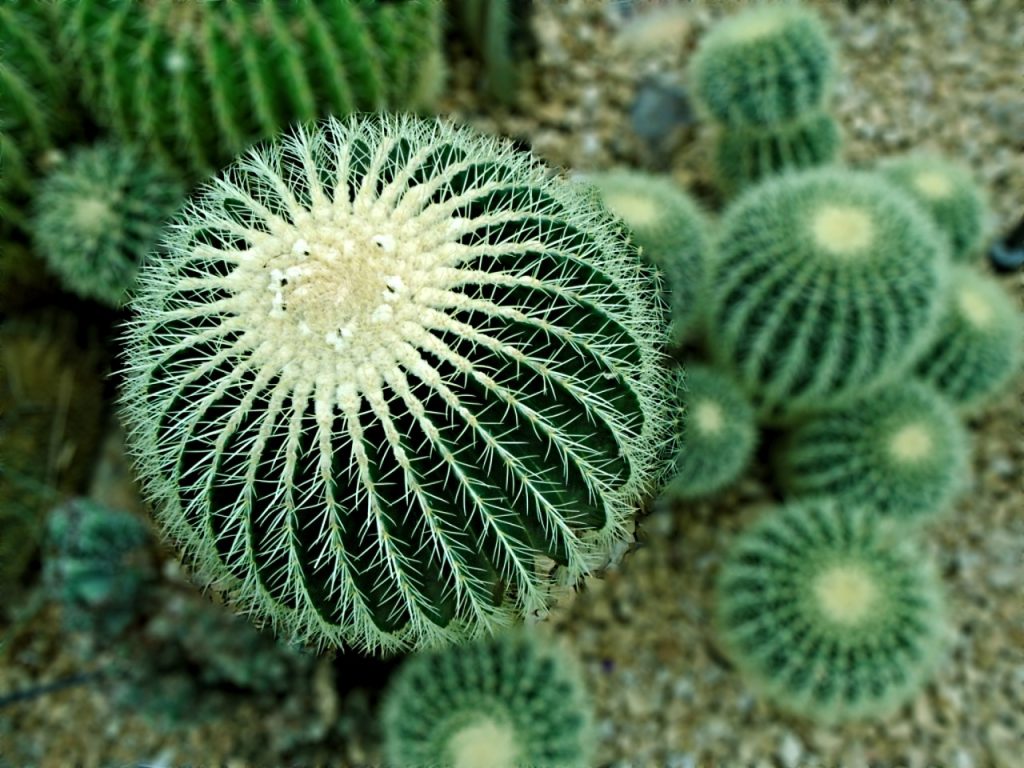
13. Easter Cactus (Hatiora gaertneri)
- Appearance: Segmented, spineless stems with star-shaped pink or red flowers in spring. Grows 6–12 inches tall.
- Care Level: Moderate. Requires higher humidity and regular watering.
- Ideal Environment: Indoor with bright, indirect light. Ideal temperature 65–75°F.
- Note: Blooms around Easter, similar to Christmas Cactus.
14. Blue Columnar Cactus (Pilosocereus pachycladus)
- Appearance: Tall, blue-green columns with short spines. Grows up to 10 feet outdoors.
- Care Level: Moderate. Protect from overwatering and cold.
- Ideal Environment: Outdoor in warm climates (Zones 9–11) or indoor with ample light.
- Note: Rarely flowers but prized for its striking blue hue.
15. Fairy Castle Cactus (Acanthocereus tetragonus)
- Appearance: Slender, green columns resembling castle turrets. Grows 1–6 feet tall.
- Care Level: Easy. Minimal watering and good drainage required.
- Ideal Environment: Indoor with bright light or outdoor in warm climates (Zones 10–11).
- Note: Rarely flowers but loved for its whimsical structure.
Table of Cactus Varieties at a Glance
| Cactus Type | Size | Care Level | Environment | Flowering |
|---|---|---|---|---|
| Golden Barrel | Up to 3 ft | Easy | Outdoor/Indoor (sunny) | Yes (yellow) |
| Bunny Ear | 1–2 ft | Easy | Indoor/Outdoor | Rare |
| Christmas Cactus | 6–12 in | Moderate | Indoor (indirect) | Yes (pink/red/white) |
| Saguaro | Up to 40 ft | Moderate | Outdoor | Yes (white) |
| Star Cactus | 2–6 in | Easy | Indoor/Outdoor | Yes (yellow/red) |
| Prickly Pear | 3–15 ft | Easy | Outdoor/Indoor | Yes (yellow/orange) |
| Moon Cactus | 4–6 in | Moderate | Indoor (indirect) | No |
| Fishhook Cactus | 6–12 in | Easy | Indoor/Outdoor | Yes (white/pink) |
| Old Man Cactus | Up to 15 ft | Moderate | Indoor/Outdoor | Rare indoors |
| Hedgehog Cactus | 1–2 ft | Easy | Outdoor/Indoor | Yes (pink/red) |
| Pincushion Cactus | 3–6 in | Easy | Indoor/Outdoor | Yes (pink/white) |
| Barrel Cactus | Up to 10 ft | Easy | Outdoor/Indoor | Yes (yellow/orange) |
| Easter Cactus | 6–12 in | Moderate | Indoor (indirect) | Yes (pink/red) |
| Blue Columnar | Up to 10 ft | Moderate | Outdoor/Indoor | Rare |
| Fairy Castle | 1–6 ft | Easy | Indoor/Outdoor | Rare |
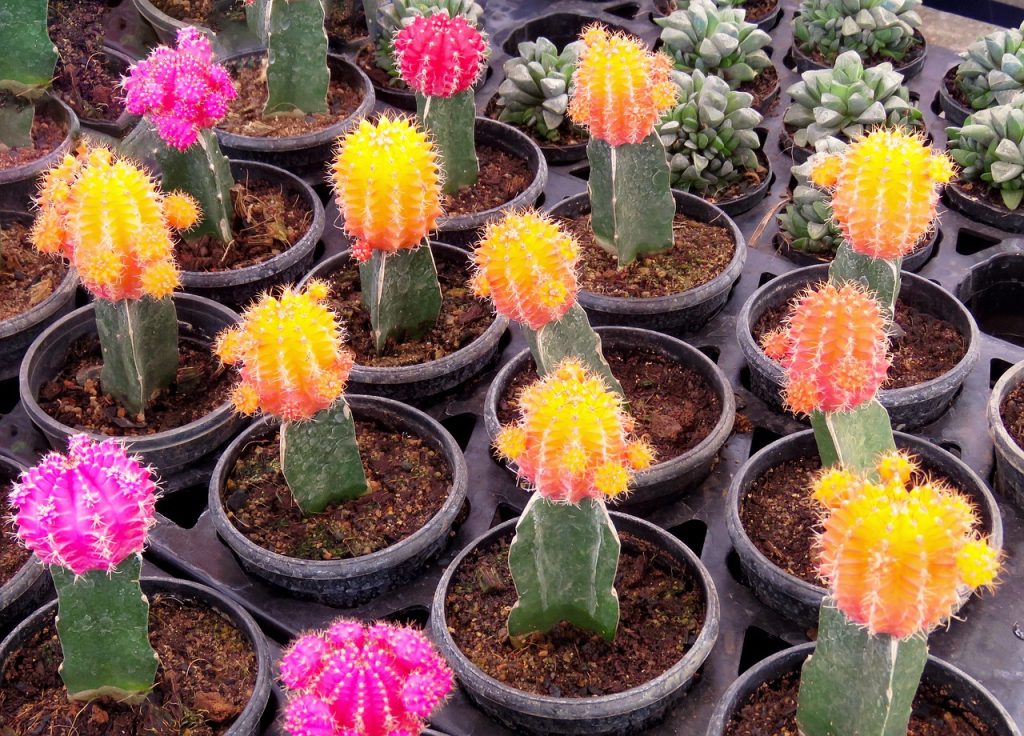
FAQs: Common Questions About Types of Cactus Plants
Bunny Ear, Moon Cactus, Pincushion Cactus, and Christmas Cactus are ideal for indoors due to their compact size and ability to thrive in indirect light.
Most cacti are easy to grow, requiring minimal water and care. However, some, like Christmas or Easter Cactus, need more attention due to higher humidity needs.
Identify cacti by their shape (columnar, barrel, padded), spine type (long, short, fuzzy), and flowering habits. Check for unique features like hairy spines (Old Man Cactus) or colorful grafts (Moon Cactus).
Saguaro, Prickly Pear, Barrel Cactus, and Hedgehog Cactus thrive outdoors in sunny, arid climates with well-draining soil.
Not all cacti flower. Some, like Moon Cactus and Fairy Castle, rarely bloom, while others, like Hedgehog and Christmas Cactus, produce vibrant flowers.
Star Cactus and Pincushion Cactus are among the smallest, growing only a few inches, making them perfect for desks or windowsills.
Tall cacti like Saguaro or Blue Columnar can be grown indoors when young but need large pots and bright light. They’re better suited for outdoor spaces as they mature.
Conclusion: Choosing Your Perfect Cactus
The diverse types of cactus plants offer endless possibilities for adding beauty and character to your home or garden. Whether you’re drawn to the whimsical Bunny Ear, the vibrant Christmas Cactus, or the majestic Saguaro, there’s a cactus for every space and style. Use this guide to explore their unique appearances and care needs, and start your cactus collection with confidence. Pick a variety that suits your environment, and enjoy the low-maintenance charm of these desert wonders!